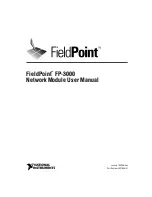
Port numbering
85
•
If you have logged into the CLI with read-write access, you enter the
CLI in privExec mode and use the commands to move to the other
command modes.
Port numbering
The port numbering for different versions of Ethernet switches are listed as
follows:
•
Ethernet Routing Switch 2526 has 24 10/100 Mb/s ports on the front, as
well as two combo ports, which includes two GBIC or two copper ports
at 10/100/1000Mbps. The switch also provides two 1000 Mb/s ports on
the rear panel.
•
Ethernet Routing Switch 2550 has 48 10/100 ports on the front, as well
as two combo ports, which includes two GBIC or two copper ports at
10/100/1000Mbps. The switch also provides two 1000 Mb/s ports on
the rear panel.
The CLI uses the variable
<portlist>
when a command specifies one or
more ports for the command.
Port numbering in Standalone Mode
In a Standalone Mode, the port number variable is an integer between 1 and
52 for Ethernet Routing Switch 2550 and 1 to 28 for Ethernet Routing Switch
2526. You can use the
<portlist>
variable in the following formats:
•
A single port number— a integer between 1 and 52.
— Example:
7
means port 7
•
A range of port numbers— a pair of port numbers between 1 and 52
separated by a dash.
— Example:
1-3
means ports 1, 2, and 3
— Example:
5-24
means all ports from port 5 through port 24
•
A list of port numbers and/or port ranges, separated by commas.
— Example: 1,3,7 means ports 1, 3, and 7
— Example:
1-3,9-11
means ports 1, 2, 3, 9, 10, and 11
— Example:
1,3-5,9-11,15
means ports 1, 3, 4, 5, 9, 10, 11, and 15
•
none
means no ports.
•
all
means all the ports on the standalone Ethernet Routing Switch
2500 Series, including any GBIC ports.
Nortel Ethernet Routing Switch 2500 Series
Overview — System Configuration
NN47215-500 (323162-B)
02.02
Standard
4.1
19 November 2007
Copyright © 2007, Nortel Networks
.
















































